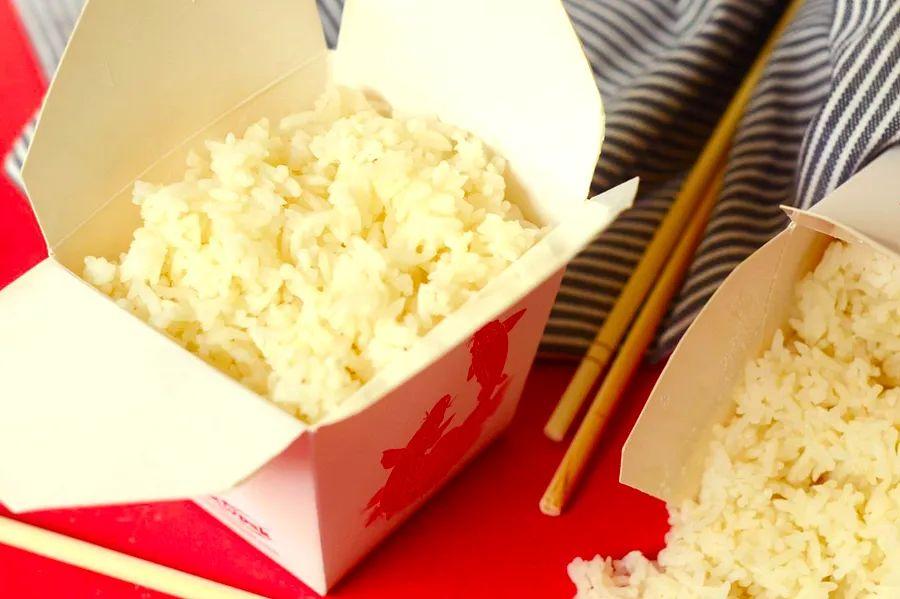Reheating Rice: A Quick Guide

Reheating Rice: A Simple Approach
Rice is a global favorite—affordable, hearty, and incredibly versatile. Whether it's used in Italian risotto, Japanese sushi, or classic rice and beans, the possibilities are endless with a fresh pot of rice.

Reheating rice can be tricky. If left too long in the fridge or reheated the wrong way, rice can turn hard and dry. Plus, improperly stored rice can be a breeding ground for harmful bacteria. We tested various methods to restore your rice to its fluffy, fresh state—from turning it into fried rice to steaming it in the microwave. Keep reading for safe and effective ways to reheat your rice.
Steam Using a Stovetop
The key to storing rice is using an airtight container to preserve its texture. However, after a few days in the fridge, the rice will inevitably start to lose moisture. Our first reheating method takes us to the stove, where minimal liquid and a wide, flat skillet help evenly heat the rice.
Remove your rice from the fridge and let it sit for 10-30 minutes until it comes to room temperature. Only do this with the portion of rice you plan to eat immediately, as repeatedly cooling and reheating rice can lead to harmful bacteria growth.
Place the leftover rice in a large skillet over low heat, adding a small amount of water or vegetable stock. Cover with a tight-fitting lid and cook for 3-5 minutes, stirring occasionally to break up clumps. This method, which uses gentle heat and a touch of moisture, will revive your rice to its light, fluffy texture.
Microwave Steaming
The microwave is one of the simplest, most convenient ways to reheat rice, especially for small portions or a quick lunch at work. However, it can also cause rice to dry out, making it less ideal for texture and flavor. To get the best results, treat the microwave as a steamer rather than a dryer, preserving moisture while heating the rice.
Spread the rice in an even layer on a microwave-safe plate. Lightly sprinkle it with water and cover with a damp paper towel—about 1-2 tablespoons of water per cup of rice. Microwave on medium heat in 30-second bursts, fluffing the rice after each interval. Continue until the rice is fully heated, typically around two minutes.
Reheat in the Oven
The oven is perfect for reheating larger quantities of rice, especially when you're serving a crowd. This method combines the principles of both the skillet and microwave, using a large shallow dish to trap heat. To reheat, spread the rice in an even layer in the dish, add a bit of water or vegetable stock, and cover with aluminum foil. Bake at 300°F for about 20 minutes, or until the rice is heated through. The residual heat will keep the rice warm until you're ready to serve.
Transform Leftovers
Struggling to restore your rice’s original fluffy texture? Don't fret—here's how to give your rice a second life, turning it into something delicious you won’t even recognize.
- Add leftover rice to a finished soup to quickly reheat it and add more starch to a meal. Chicken wild rice soup, for example, is a healthy and pleasant addition to a chilly afternoon.
- Rice can also be repurposed as a dessert. Add a little milk, sugar, and vanilla to your rice to transform it into a creamy rice pudding.
- Make a simple stir fry: Heat a generous amount of vegetable oil in a large skillet or wok. For an easy vegetable stir fry, chop desired vegetables (carrots, snow peas, onions, etc) into small, even pieces and add to the skillet. Once your vegetables are cooked, stir in the cold rice and flavor with soy sauce, sesame oil, and chili sauce (to taste).
Proper Storage: Setting Up for Success
If you're planning to save rice for later, the key to success is proper storage from the start.
When cooked rice is left out at room temperature, spores of bacillus cereus can activate, producing harmful bacteria that cause food poisoning. Prevent this by reducing warm, moist conditions that encourage bacterial growth.
Store your rice in an airtight container and allow it to cool with some steam escaping before placing it in the refrigerator. Avoid leaving rice at room temperature for more than one to two hours after cooking.
By following these steps, your rice will stay fresh in the fridge for 4-6 days. Keep in mind that the type of rice you cooked can affect its shelf life—white rice tends to last longer than brown rice.
If you need to store rice for a longer period, freezing is a great option. Simply place fresh, hot rice in an airtight container. To make meal prep easier and reduce waste, pre-portion the rice into separate servings before freezing it. Freezer bags work great for this.
To prevent freezer burn and lock in moisture, squeeze out any excess oxygen from the container before sealing it. Properly frozen rice can last up to one month, giving you plenty of time to plan your next rice dish.
Explore our collection of Rice Recipes.

1

2

3

4

5
Evaluation :
5/5